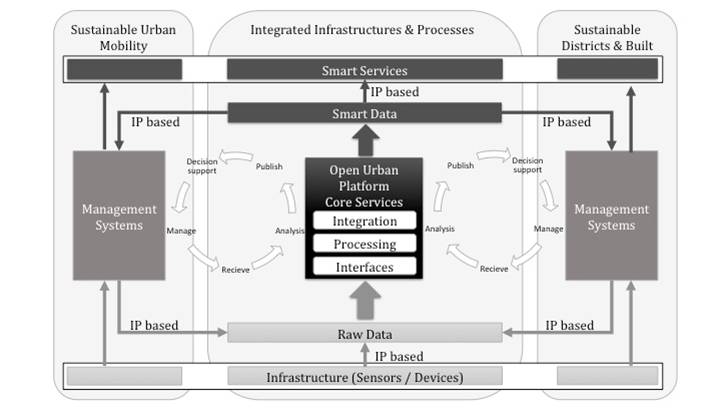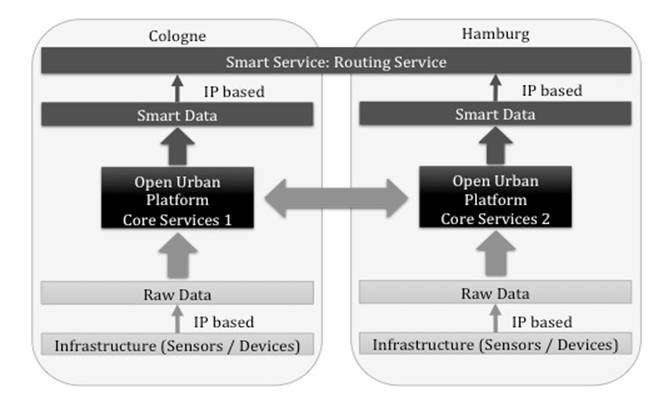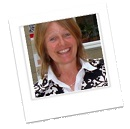Our smart district is producing a lot of information. Our “SmartHome GrowSmarter” research study for example will look at the feedback that the volunteer tenants will give from the use of Smart systems in their energetically renovated houses. Open Urban Platforms such as the one developed in GrowSmarter, including our Urban cockpit, is becoming a reference for smart cities.
Action Area 2 - Low Energy Districts: SmartHome Systems in the Stegerwaldsiedlung
RheinEnergie found a manufacturer (homee) who is going to equip the Smart Home system with an interface that enables AGT to collect and measure the required data. The aim of the study is to investigate the impact of Smart Home systems on users' quality of life and potential energy savings.
Every tenant who lives in one of the 16 energetically renovated houses can apply to participate in the “SmartHome GrowSmarter” research study. RheinEnergie offers to install up to 50 free systems. Participants will receive a SmartHome system worth approx. 1.000€ (including installation) which they can keep after the end of the study.participants must agree to share their experiences in surveys which will be sent out at least quarterly. The data will be evaluated anonymously and confidentially by the technical university of Cologne (TH Köln).
With the SmartHome system provided, tenants have an open system that can combine different radio protocols and components from many different manufacturers to set up individual SmartHome systems. The research study decided to use the radio protocol Z-Wave. The tenants received the homee base cube, the Z-Wave radio cube and various matching components, such as the smart heating thermostat, window and door sensors and smart plugs to measure the electricity consumption. The base cube collects information, processes it and stores it locally. It acts as the central control over the smart components. A Wi-Fi connection allows the control of the connected devices via smartphone or PC. To connect more sensors or actors you can add more cubes to the brain cube which support other Smart Home radio protocols like Z-Wave, Zigbee or EnOcean.
The Smart Home system allows a comfortable control of lights, heating, etc. via Smartphone from any room. You can, for example, check that all windows are closed while being away from home.
At both informational events on March 24th 2018 and on May 17th 2018, the project partners RheinEnergie (with the TH Köln) and AGT had a display wall to explain the system and the extra components to the tenants and show them its advantages.
 Photo: The home base cube (white) and the Z-Wave radio protocol cube (purple) and demonstration wall
Photo: The home base cube (white) and the Z-Wave radio protocol cube (purple) and demonstration wallAction Area 3 - Integrated Infrastructure: Open urban Platforms as key component for integrated SmartCity infrastructures
The European Innovation Partnership for Smart Cities and Communities (EIP-SCC) exists since 2013 and now has more than 5,000 affiliates in over 31 countries. The EIP-SCC discusses central questions of the Smart Spatial Development. A central finding of the Cluster “Integrated Infrastructures & Processes”[1] is the need for open urban platforms prerequisite for the rapid implementation of intelligent solutions in the cities that can be used by the various actors in a city. The first step in this direction has been made by the Urban Platforms initiative, which comprises three areas: the demand side, which is mainly represented by cities, the supplier side, and the standardization.
With a Memorandum of Understanding (MoU) “Towards Open Urban Platforms for Smart Cities and Communities”, the initiative aims to provide broad support from the industry for the implementation of open solutions. Currently, 44 companies from the industry have signed the memorandum. On the demand side, a declaration of intent has been signed by the 24 cities and two city networks, which will help to develop the core requirements for open, urban platforms.
[ui!]UrbanPulse is one of the first urban platforms that has been aligned to the reference architecture of the MoU and thus the open urban data platform of Cologne according to GrowSmarter's “Integrated Infrastructure” measure “8.1 Big consolidated open data platform” conforms to the reference architecture.
DIN SPEC Open Urban Platform (OUP) The German standards organization DIN has picked up the activities of the Action Cluster Integrated Infrastructure and Processes on the MoU and developed an “Open Urban Platform” with a regional consortium consisting of members from cities, operators, vendors, and academia the DIN SPEC 91357[1]. The reference architecture of the MoU has served as a sound base as depicted in the figure below. Both core partners of WP3 in Cologne, the City of Cologne and [ui!], were members of the DIN SPEC team and provided strategic guidance. As consortium leader, [ui!] orchestrated input also from other members working in SCC01 projects such as Triangulum, Smarter Together and mySMARTLife.
 MoU Reference graphic
MoU Reference graphicUrban COCKPIT The GrowSmarter Cologne Urban COCKPIT is a solution developed on top of the open urban platform and is based on the [ui!] COCKPIT. It is designed to support analytics of real time data. By integrating, processing and visualizing data, a proof of concept can be done proving that the data is really available and in good quality. This is an important step for using and offering the data for value added services.
The WebAPP has been developed for GrowSmarter to provide insight in the different measures implemented in Cologne. It gives decision makers an easily understandable overview of the current and historical state of the pilot implementation. This includes traffic and parking loads, parking situations, energy consumption and production and mobility stations. All data is provided by the infrastructures and does not include personal data. It will be used to understand which data is available, at which quality in a human understandable way. It serves therefore also as a communication tool with other departments within the City administration as well as with external parties.

Urban cockpit main view and map view
The indicator on the left side of the Urban COCKPIT main page is pulsing and gives information of the current “pulse” of the city. In case of large traffic loads, much pollution, bad parking situations, high amount of non-regenerative energy consumption, etc. the pulse is very high which indicates the city suffers from “stress”. On the right side, different tiles or certain Smart City indicators are arranged. The timeline on the bottom of the cockpit can be used to see historical states of the city.
Federation of Open Urban PlatformsWithin the DIN SPEC 91357 and in alignment to the MoU, the federation of open urban platforms has been addressed. A federation allows different urban data platforms to exchange data in a transparent way thus that smart services in any given city can benefit from data sources even outside of the city as well as deploying smart services into other cities.
The below figure provides a schematic view of such a federation depicted from the DIN SPEC 91357.

User scenario
Let’s assume, a start-up from Cologne would like to develop a mobile application that enables the multi-modal routing and integrated usage of public transport, electric mobility and different energy infrastructure elements (e.g. charging stations) across Germany. Therefore, the start-up obtains relevant data regarding the current city from the related Open Urban Platform via an Open Data Portal (e.g. https://offenedaten-koeln.de/). To extend their service to other cities in Germany the start-up uses the GovData.De portal and its data-catalog to lookup for Open Urban Platforms of other cities providing equivalent datasets and services required by their mobile application. The available information from the Open Data Portals and their corresponding Open Urban Platforms of Hamburg and Cologne has been harvested by integrating their data catalogs. This way the mobile application can transparently provide services both in Cologne and Hamburg, instead of having two APPs, e.g. one for each city. Given a user opens the mobile application in Cologne to plan a journey to Hamburg. The mobile application should provide the most convenient combination of transportation means concerning the traffic situation and public transport options and availability of charging stations.”
Our vision is therefore to connect the urban platforms within GrowSmarter across the three GrowSmarter lighthouse cities Stockholm, Cologne and Barcelona and if applicable between lighthouse cities and follower cities. This way, we allow for more smart services to be developed and thus creating an even larger ecosystem adhering to our ambitious goal of prosperity and growth.




